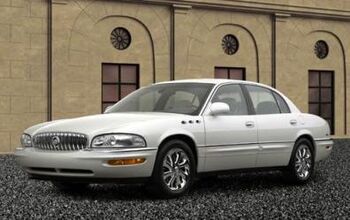23 Views
Piston Slap: Parked in the Polar Vortex?

by
Sajeev Mehta
(IC: employee)
Published: February 8th, 2019
Share
V writes:Here are two questions from a regular, and grateful, Piston Slap reader:
- How long is best to idle a gasoline engine after starting & before driving off: [A] a few minutes? one minute? [C] until the revs settle down? no need, just drive right off? Assume ambient temperature well above freezing; a shifting style on the sedate side; and a car made in the past 15 years so engine has EFI and EGR and all that. Current ride’s engine is naturally-aspirated and direct-injected, but I sure would appreciate knowing the proper protocol for other combinations too, if different. Several sources over the past years have all agreed on for modern engines, but then just a few months back a Car & Driver column said [A], so now I’m unsure again.
- Leaving a car (stick shift *of course*) parked: best in gear, best in neutral, or doesn’t matter? Assume the parking space is either not sloped at all, or is sloped and I know enough to turn a front wheel into the curb toward the down slope.
{
"id": "9011256",
"alt": "",
"title": "",
"video_link": "https://www.youtube.com/embed/0NRqnuMP2Yg",
"youtube_video_id": "0NRqnuMP2Yg"
}
{
"width": 634,
"height": 357,
"showRelated": true
}
Back to manuals, do only park it in first gear: numerically higher gears require more wheel rotations to move the rest of the drivetrain. What’s great for jackrabbit starts is also great for holding the vehicle on not-perfectly flat ground…Send your queries to sajeev@thetruthaboutcars.com. Spare no details and ask for a speedy resolution if you’re in a hurry…but be realistic, and use your make/model specific forums instead of TTAC for more timely advice.[Image: © Timothy Cain/TTAC]
#BlockHeater
#ColdWeatherStartUp
#EngineBlockHeater
#EngineWarmUpInThePolarVortex
#ManualTransmission
#Oil
#ParkInFirstGear
#ParkInGear
#ParkingBrake
#PolarVortex
#WarmUp
#WarmUpProcedure

Sajeev Mehta
More by Sajeev Mehta
Published February 8th, 2019 8:08 AM
Latest Car Reviews
Read moreLatest Product Reviews
Read moreRecent Comments
- SCE to AUX The nose went from terrible to weird.
- Chris P Bacon I'm not a fan of either, but if I had to choose, it would be the RAV. It's built for the long run with a NA engine and an 8 speed transmission. The Honda with a turbo and CVT might still last as long, but maintenance is going to cost more to get to 200000 miles for sure. The Honda is built for the first owner to lease and give back in 36 months. The Toyota is built to own and pass down.
- Dwford Ford's management change their plans like they change their underwear. Where were all the prototypes of the larger EVs that were supposed to come out next year? Or for the next gen EV truck? Nowhere to be seen. Now those vaporware models are on the back burner to pursue cheaper models. Yeah, ok.
- Wjtinfwb My comment about "missing the mark" was directed at, of the mentioned cars, none created huge demand or excitement once they were introduced. All three had some cool aspects; Thunderbird was pretty good exterior, let down by the Lincoln LS dash and the fairly weak 3.9L V8 at launch. The Prowler was super cool and unique, only the little nerf bumpers spoiled the exterior and of course the V6 was a huge letdown. SSR had the beans, but in my opinion was spoiled by the tonneau cover over the bed. Remove the cover, finish the bed with some teak or walnut and I think it could have been more appealing. All three were targeting a very small market (expensive 2-seaters without a prestige badge) which probably contributed. The PT Cruiser succeeded in this space by being both more practical and cheap. Of the three, I'd still like to have a Thunderbird in my garage in a classic color like the silver/green metallic offered in the later years.
- D Screw Tesla. There are millions of affordable EVs already in use and widely available. Commonly seen in Peachtree City, GA, and The Villages, FL, they are cheap, convenient, and fun. We just need more municipalities to accept them. If they'll allow AVs on the road, why not golf cars?

































Comments
Join the conversation
I wish more cars had an oil temperature gauge. My Chrysler 300 has a digital oil temperature gauge, besides a digital engine coolant and digital transmission temperature gauge. Here in Canada in winters that is a very useful indicator as to whether the engine has reached it's normal operating temperature. I normally wait for engine rpms to drop below 1000 on a cold start up before driving off slowly. Keep the rpms and engine load low. And even if my trip is short, I try and get the engine oil to get up to it's normal operating temperature which is at least 75 Celsius to 80 Celsius.
I start the car, wait a few seconds before putting the engine into gear, and then let it warm up by driving slowly/low RPM with very little load on the engine while driving on the residential streets in my neighborhood. No fuel wasted sitting idling as the engine warms up and 10 mph reduces trip time as compared to 0 mph. By the time I get to the main side streets, the coolant temperature is warm enough to heat the car and I drive with moderate acceleration.